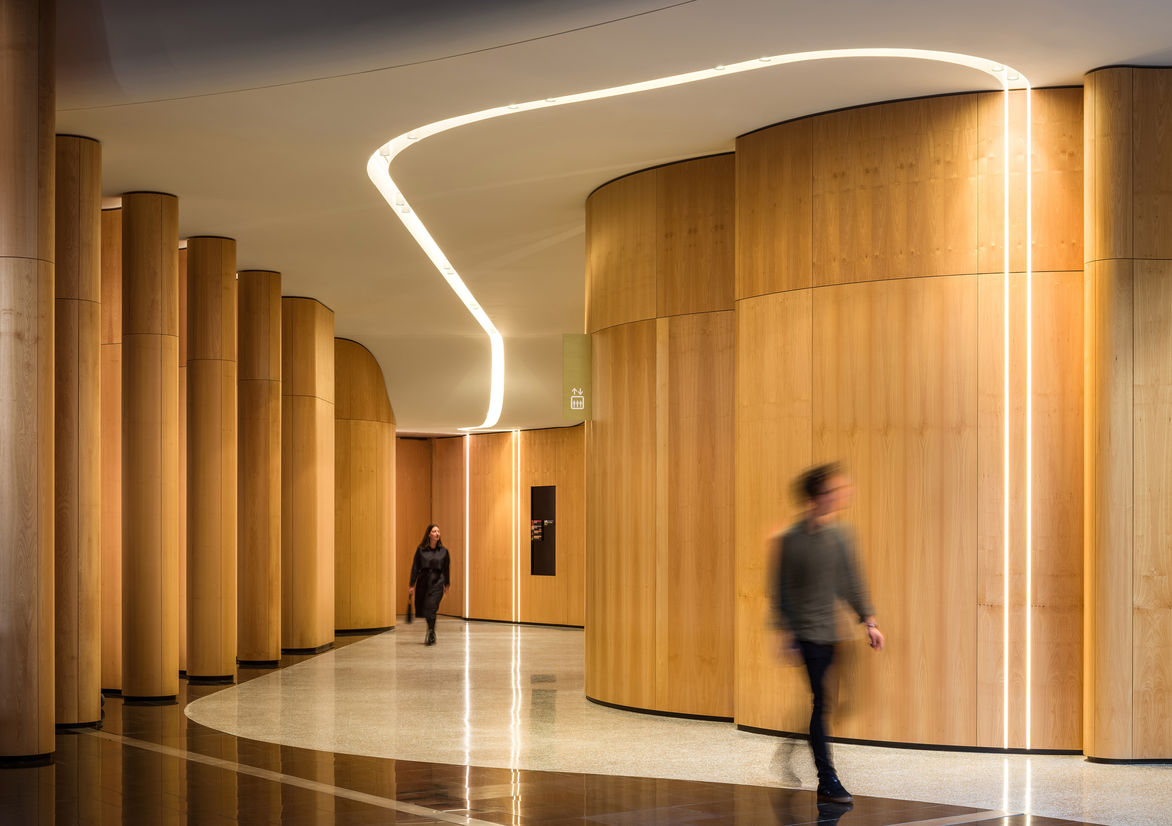Spatial
Jasmax 85 FJMT, designTRIBE, Graham Tipene Te Ao Mārama Project, Auckland War Memorial Museum/ Tāmaki Paenga Hira
-
Pou Auaha / Creative Directors
Richard Francis Jones, Marianne Riley, Rau Hoskins, Neil Martin
-
Ngā Kaimahi / Team Members
Paul Lelieveld, Hunter Gillies, Justine Goode, Icao Tiseli, Simon Barr, Roberta Johnson, Chad Bishop, Alex Brough -
Kaitautoko / Contributors
Graham Tipene, Sopolemalama Filipe Tohi, Chris Bailey, Brett Graham, Salmond Reed Architects, ASPEC -
Client
AWMM









Description:
Working within the era-spanning architecture of the Auckland War Memorial Museum, the brief for Te Ao Mārama was to elevate the manuhiri/ visitor experience, focused on arrival from the southern entry – which accommodates 75% of AWMM daily visitation. The vision was for a catalytic transformation, delivering a bicultural welcome experience to acknowledge mana whenua, and be relevant to Auckland’s diverse population which the museum serves. Manaakitanga for manuhiri and kaitiakitanga for taonga and the building are at the heart of the brief. Extensive consultation shaped all design elements to respond to cultural protocols and museum operations whilst complying with both detailed heritage and governance overlays.
Te Ao Mārama has established a new bicultural approach to public museum design, leading the way forward internationally. Architecture, artwork, interior design and exhibition content all work together to reflect mana whenua and Pacific cultural narratives. Previously only partially visible, the central form of a suspended tanoa bowl is now fully resplendent within the atrium. This was enabled by relocating the temporary exhibition space previously located beneath. New timber-lined boulevards now connect Te Ao Mārama to the Māori Court intuitively guiding visitors and revealing new galleries. Galleries have been upgraded with infrastructure concealed within new raised floors and ceiling-mounted services shields which enable appreciation of heritage features and spatial volumes previously obscured. The intent is to bring a unifying experience which transcends eras, smoothing over interfaces between prior development stages.
Materials were assessed for their robustness and ability to patina in areas of high public use. Selections such as bronze joinery, terrazzo flooring, tawa and Tasmanian blackwood veneers pay homage to the Museum’s origins, materiality, and more recent additions – such as the Fijian kauri clad tanoa bowl dating from 2006. Heritage materials such as fibrous plaster mouldings have been entirely reconceived to form fluid three-dimensional ceiling features concealing services and structural transitions. Through the boulevards, brass inlays and lighting provide a rhythmic measurement system recording the passage of time between past and present, old and new.
The atrium serves multiple functions – formal and informal welcome, educational and social. Devices to enable concurrent activities and events, such as screening elements, lighting and acoustic treatments are elevated into iconic architectural motifs. The glowing underside of the tanoa bowl references pacific astral navigation and radial geometries, with the design centering manuhiri within Te Ao Mārama, orientating them to their place in the Tāmaki, Aotearoa and the South Pacific. Articulation of thresholds and boulevards provide intuitive wayfinding for visitors. Waiting spaces, like eddies, flow off the boulevards with built-in seating at new lift lobbies. The ceremonial gateway into the south atrium is demarcated by cultural artworks such as Te Tatau Kaitiaki by Graham Tipene, Ngati Whatua and the twin Wahi Whakanoa by Chris Bailey, Ngati Paoa – for removing tapu on departure.
Photography
© Lightforge, © Daan Hoffman, © Auckland War Memorial Museum Tāmaki Paenga Hira
Judge's comments:
A true representation of respect with care in an iconic building within Auckland the 'era- spanning architecture' elevates the arrival experience with its unifed approach, offering guests to be immsersed and engaged through the spaces it is a great example of a bicultural design journey.